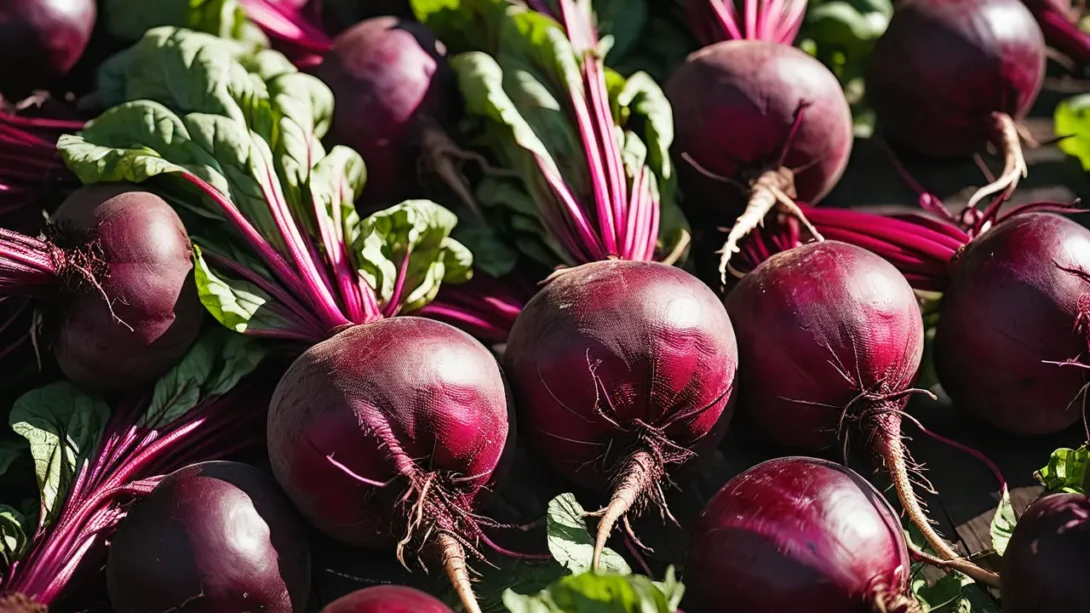Beets, or Beta vulgaris, are root vegetables known for their vibrant colors, distinctive taste, and nutritional benefits. They come in a variety of types, including the common red beet, golden beet, and the striped Chioggia, each adding a unique flair to dishes around the world. Beyond their visual appeal, beets are a versatile ingredient in the kitchen, capable of being prepared in numerous ways to suit different tastes and culinary applications. Packed with vitamins, minerals, and antioxidants, beets offer a combination of health benefits alongside their culinary versatility.
Flavor Profile of Beets
Raw Beets
Raw beets have a distinct taste that can be described as earthy and sweet, with a crisp and firm texture that makes them ideal for salads and slaws. The earthiness comes from geosmin, a compound that beets share with other root vegetables, giving them their characteristic “ground” flavor. This taste can be particularly intense in fresh beets and varies across different varieties. The sweetness of raw beets, a result of their high sugar content, balances their earthy notes, making them a unique addition to cold dishes.
The flavor of raw beets also depends significantly on their freshness and the specific variety. Younger beets tend to be more tender and less earthy than their mature counterparts, making them more palatable to those who may be wary of the strong “dirt” taste often associated with beets.
Cooked Beets
Cooking beets transforms their texture and flavor in several ways. When roasted, boiled, or steamed, beets become softer and their natural sweetness is enhanced, making the earthy flavor less pronounced. Roasting, in particular, caramelizes the sugars in beets, giving them a richer, more concentrated sweetness compared to boiling or steaming, which can dilute some of their flavors.
The method of cooking can also affect the texture of beets, from the tender, almost buttery consistency achieved through roasting to the softer, more uniform texture from boiling or steaming. Cooked beets are incredibly versatile, serving as a flavorful base for purees, soups, or as a tender addition to salads and side dishes.
Golden vs. Red Beets
The flavor profile of beets can vary significantly between the different types, with red and golden beets being the most commonly compared. Red beets are known for their deep, ruby color and have a strong, earthy flavor that is both sweet and slightly tangy. This intensity is what most people associate with the classic beet taste, which can be polarizing due to its robust earthiness.
Golden beets, on the other hand, offer a milder taste with a less pronounced earthiness and a sweeter, more subtle flavor. Their golden-yellow flesh does not bleed like red beets, making them a preferred choice for lighter dishes where the striking color of red beets might be overpowering. The sweetness and milder taste of golden beets make them more versatile for raw applications or in dishes where a more delicate flavor is desired.
The visual impact of beet color on taste perception cannot be understated. The vibrant hues of beets, ranging from deep purples and reds to golden yellows, add not only a burst of color but can also influence the perceived sweetness and flavor of the vegetable in dishes.
The Impact of Preparation and Pairings on Beet Flavor
Preparation Techniques
The way beets are prepared can greatly influence their flavor and texture. Slicing beets thinly and adding them raw to salads can highlight their crisp texture and natural sweetness, while dicing or grating them can integrate their earthy flavor more subtly into dishes. Pureeing cooked beets creates a smooth, rich base for soups, sauces, or dips, concentrating their sweetness and color.
Pickling is another popular preparation method that transforms the flavor profile of beets. By pickling, the natural sweetness of beets is balanced with the acidity of vinegar, creating a tangy, sweet, and sour condiment that can add a flavorful punch to salads, sandwiches, and other dishes. Fermenting beets, similarly, can introduce a unique tang and depth of flavor, making them a delicious and probiotic-rich addition to meals.
Pairings That Enhance Beet Flavor
Beets pair well with a variety of ingredients that can enhance or complement their natural flavors. For example, the earthiness of beets goes well with the creamy richness of goat cheese or feta, creating a balance of flavors that is both satisfying and complex. Citrus fruits, like oranges or grapefruit, can add a bright, acidic contrast to the sweetness of beets, elevating salads and side dishes.
Nuts, especially walnuts or pecans, introduce a crunchy texture and nutty flavor that pairs beautifully with both raw and cooked beets. Herbs such as dill, chervil, and parsley can add freshness and lift to beet dishes, highlighting their natural flavors without overpowering them.
The Role of Beets in World Cuisines
Beets hold a cherished place in the culinary traditions of many cultures around the globe, showcasing their versatility and unique flavor profile. In Eastern European cuisine, beets are the star ingredient of borscht, a hearty soup known for its deep red color and comforting blend of flavors. This dish highlights the beet’s ability to infuse meals with both vibrant color and a rich, earthy sweetness.
Scandinavian countries often incorporate pickled beets into their dishes, serving them alongside fish or potato salads to add a tangy, sweet contrast. Meanwhile, in Indian cuisine, beets are used in a variety of ways, from spicy beet curries to refreshing beet salads, demonstrating the vegetable’s ability to adapt to different flavor profiles and cooking techniques.
The Middle Eastern dish, beet hummus, offers a twist on the traditional chickpea spread by incorporating pureed roasted beets, which lend a beautiful pink hue and a subtle sweetness that complements the savory flavors of tahini and garlic. These examples underline the global appreciation for beets and their capacity to enhance dishes with their taste and nutritional value.
Conclusion
The unique taste profile of beets, characterized by their earthy sweetness and versatility, makes them a fascinating ingredient in both traditional and contemporary cuisines. Whether enjoyed raw, roasted, pickled, or pureed, beets can add depth, color, and nutrition to a wide array of dishes. Their ability to pair well with a variety of ingredients, from rich cheeses to bright citrus, allows for endless culinary exploration.
Encouraging experimentation with beets in cooking can unlock new flavors and textures, making meals more vibrant and healthful. By understanding the impact of preparation techniques and pairings on beet flavor, chefs and home cooks alike can elevate their dishes, making the most of this versatile vegetable. Whether you’re a longtime beet lover or a curious newcomer, the rich world of beet flavors awaits, promising to add a delicious and nutritious twist to your culinary repertoire.




